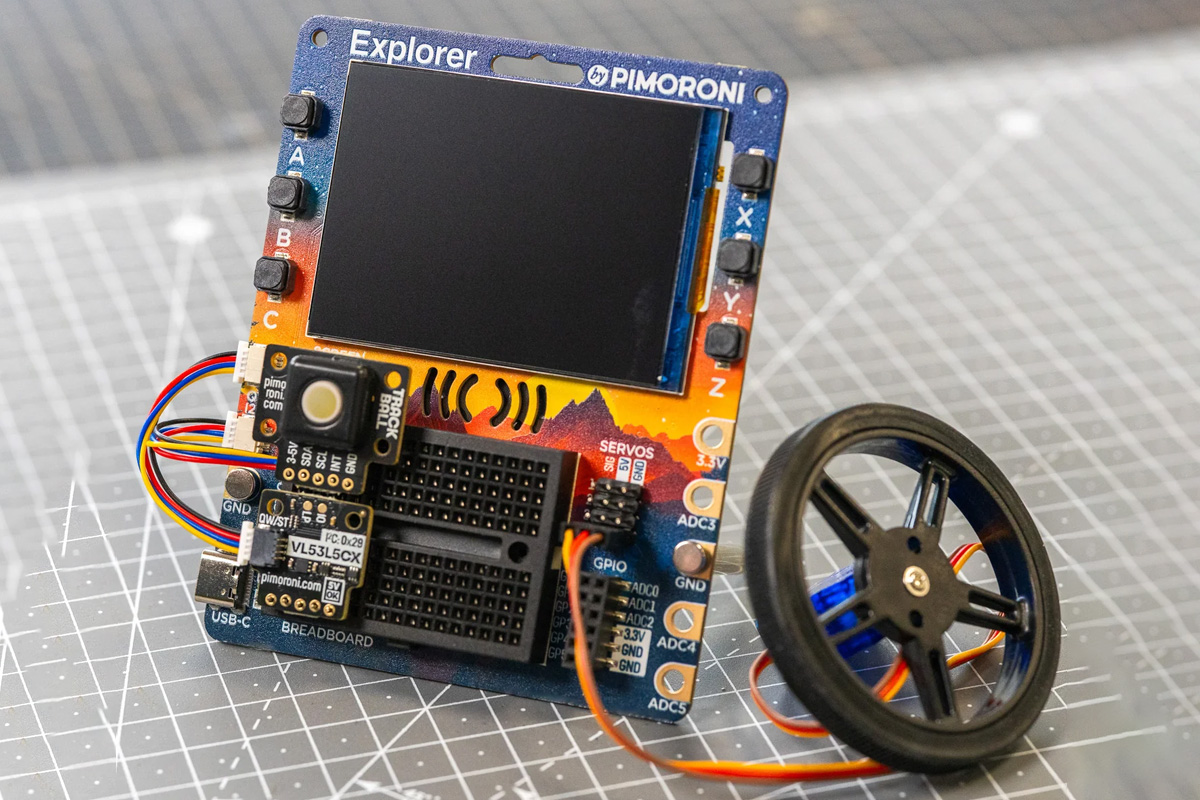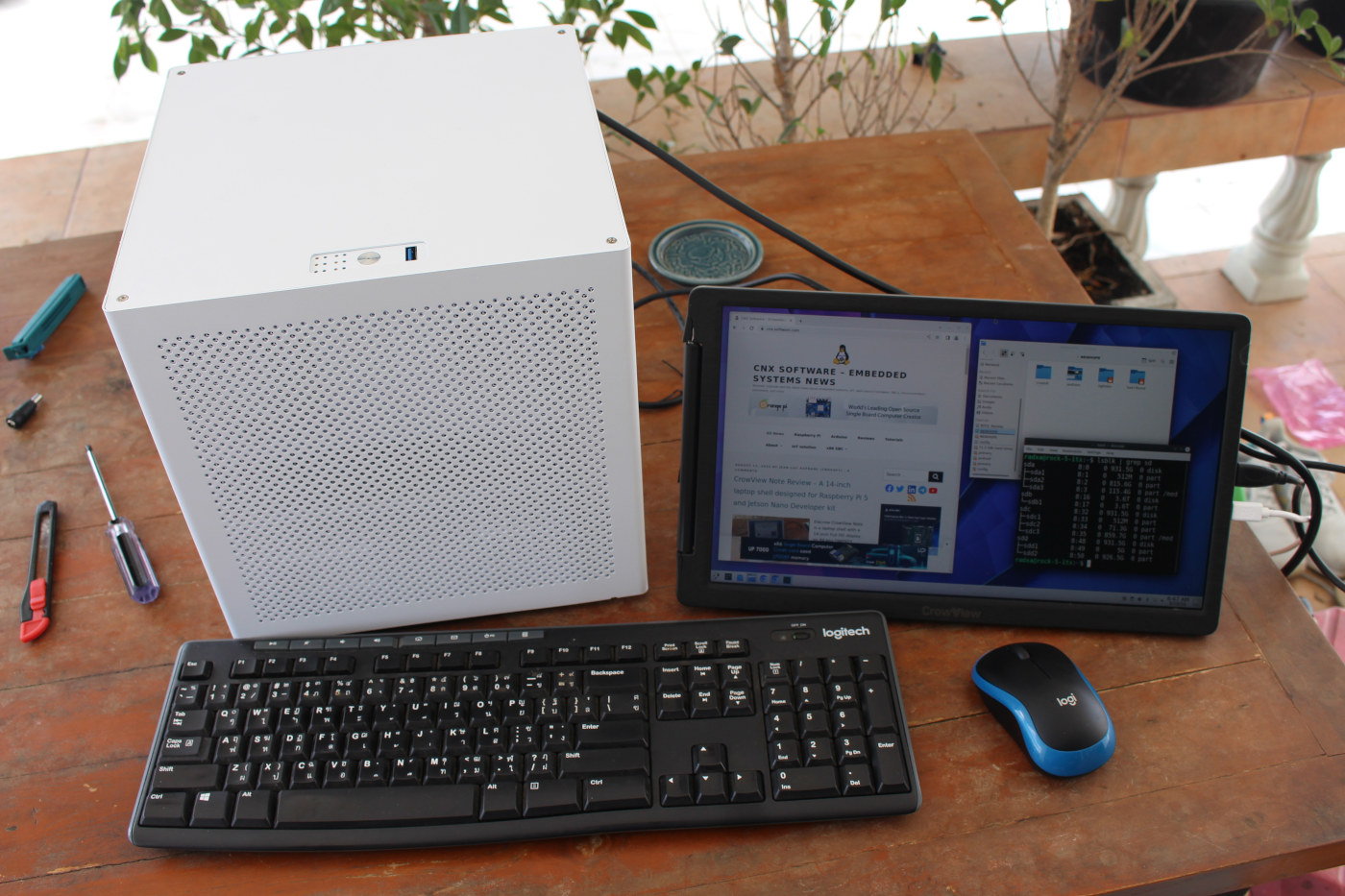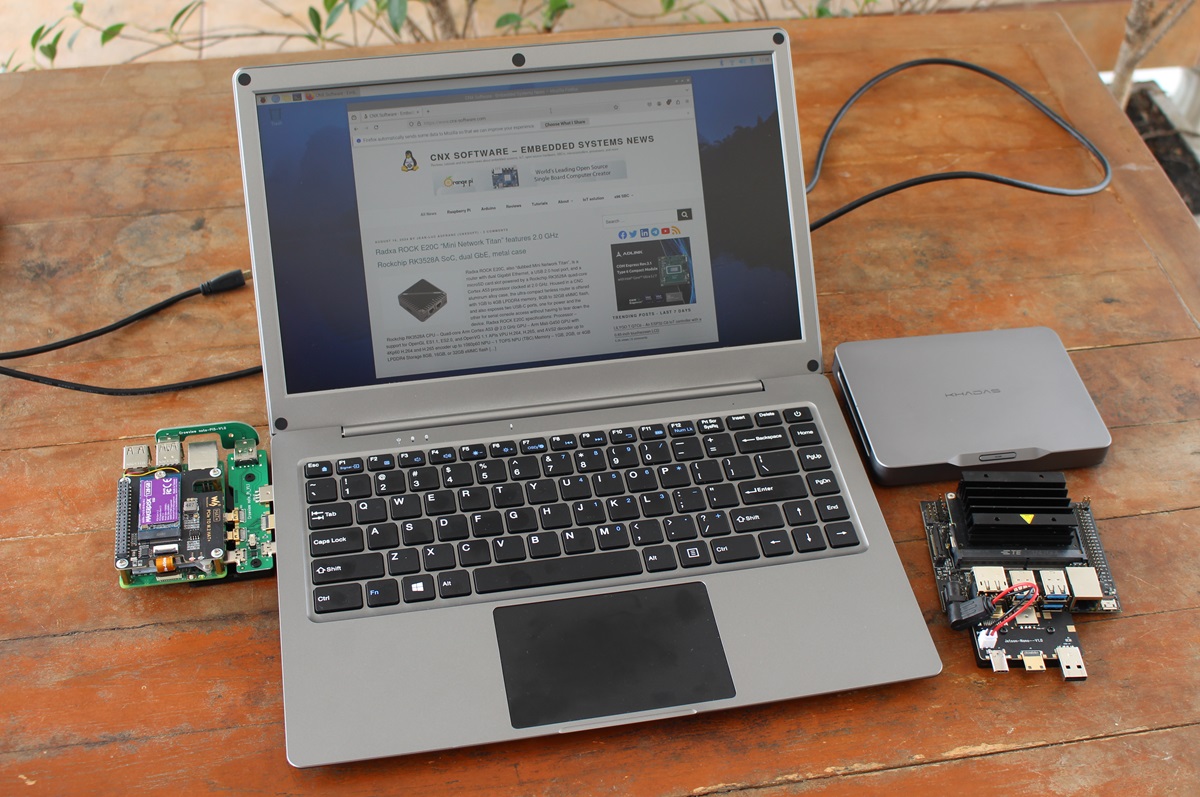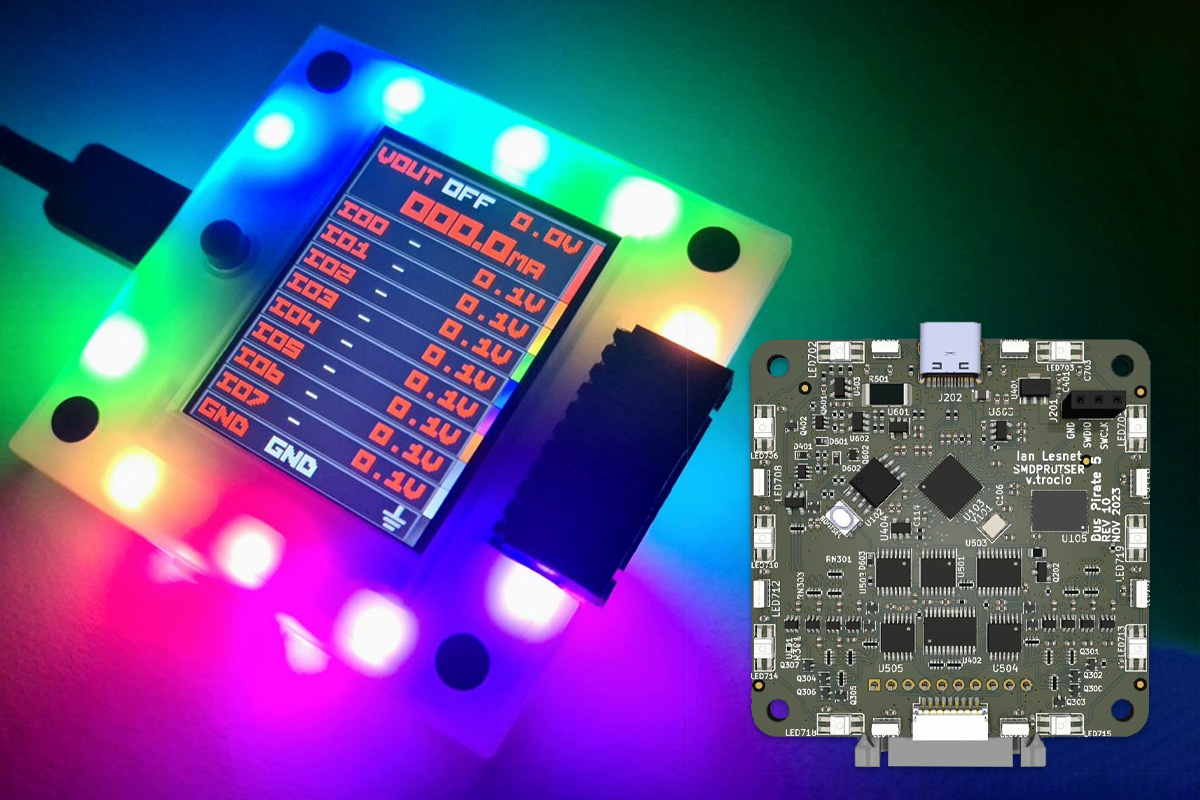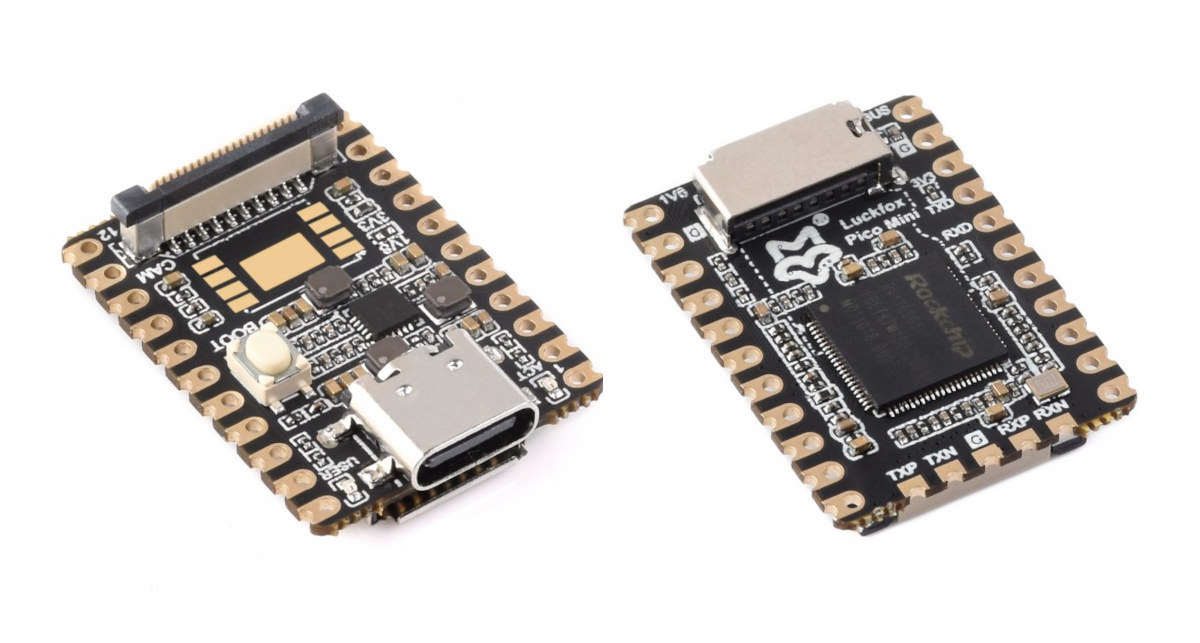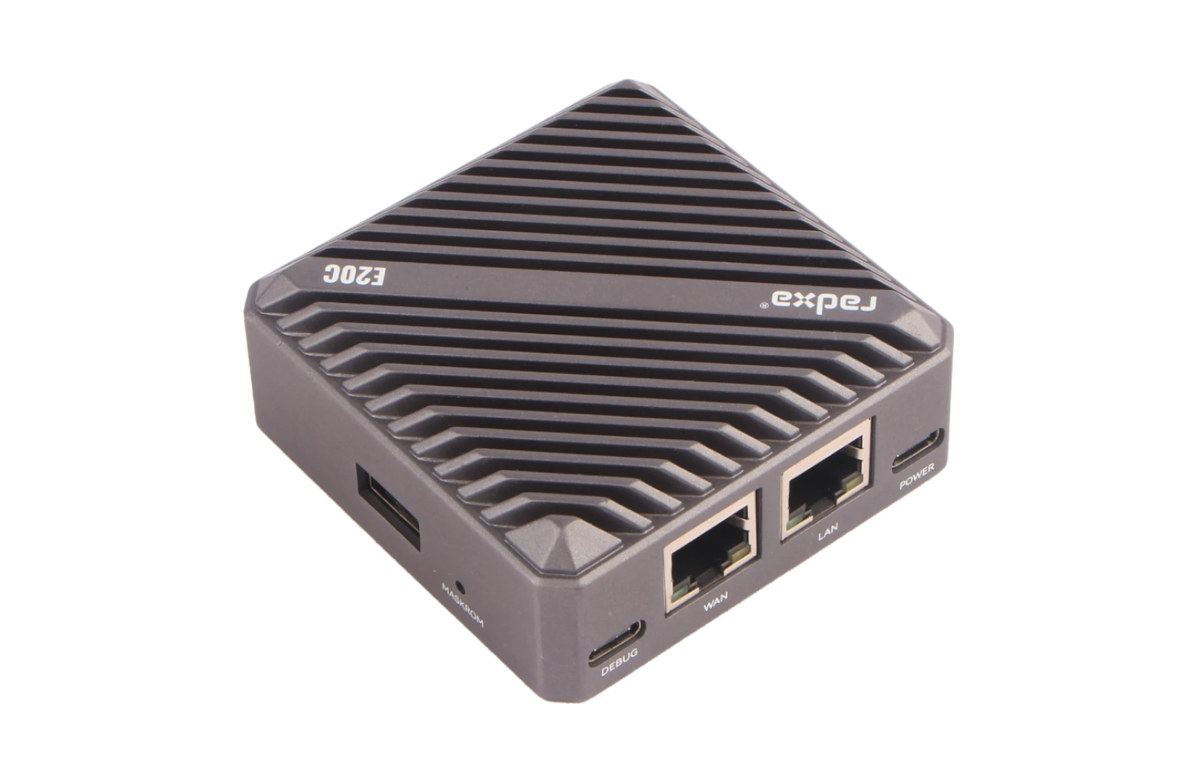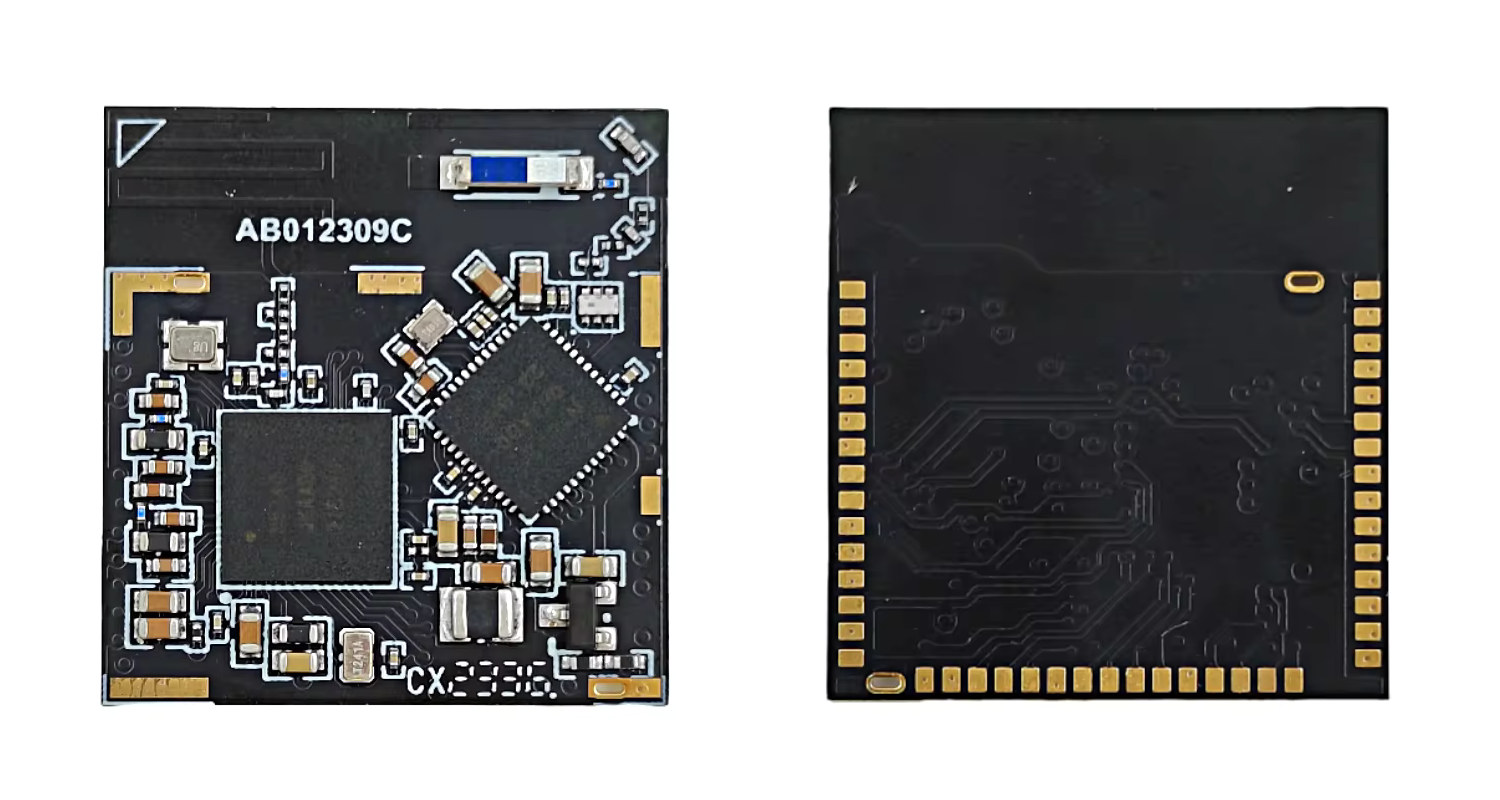The Pimoroni Explorer board is an electronic prototyping board built around the Raspberry Pi RP2350 chip with a 2.8-inch LCD screen, a speaker connector, and various I/Os, which makes it easy to build circuits, prototype projects, and even make small robots. It also features a mini breadboard, tactile buttons, and crocodile clip terminals, making it suitable for both beginners and experienced makers. The RP2350 MCU was recently released by Raspberry Pi Limited along with the $5 Raspberry Pi Pico 2 board. Since that initial release, we have seen many RP2350-based development boards like the Cytron MOTION 2350 Pro, the Bus Pirate 5XL and 6, and many other development boards released, feel free to check those out if you are looking for development boards built around the RP2350 MCU. Pimoroni Explorer board specifications Microcontroller – Raspberry Pi RP2350B MCU CPU Dual-core Arm Cortex-M33 @150MHz with Arm Trustzone for secure boot Dual-core 32-bit […]
ASUS N97T-IM-A – A thin mini-ITX motherboard powered by an Intel Processor N97 Alder Lake-N CPU
The ASUS N97T-IM-A is a thin Mini-ITX motherboard for industrial and embedded use, featuring the Intel N97 Alder Lake-N processor (4 cores, 2.0–3.6 GHz) with up to 16GB of DDR5 memory at 4800 MHz, and two gigabit Ethernet ports using Realtek RTL8111H controllers. The board also includes two SATA III 6Gbps ports, a PCIe 3.0/2.0 x1 slot, and dual M.2 slots for NVMe and Wi-Fi/Bluetooth. It supports HDMI 2.0, DP++, and LVDS video outputs, with optional eDP, and can handle resolutions up to 4K at 60 Hz. Built for durability, the N97T-IM-A is designed for demanding environments with a seven-year product lifecycle. In one of our last posts, we wrote about the Jetway JNUC-ADN1, another Intel N97-powered SBC, but in a smaller Next Unit of Computing (NUC) form factor and the Jetway JMTX-ADN8 another N97 mini-ITX motherboard. Other than that we have also written about similar motherboards in the mini-ITX form factor including […]
Radxa ROCK 5 ITX RK3588 mini-ITX motherboard review – Building an Arm PC and NAS with Debian KDE
In this review, I’ll show how I installed Debian on the ROCK 5 ITX mini-ITX motherboard powered by a Rockchip RK3588 octa-core Arm Cortex-A76/A55 processor, before building a computer/NAS with the Arm mini-ITX motherboard, testing various features and running benchmarks. In the first part of the review, we checked out the Radxa ROCK 5 ITX (Arm) and Jupiter (RISC-V) mini-ITX motherboards with specifications and unboxing, and the Auriga 6-Bay NAS mini-ITX chassis used in this review. I already built the computer with the Jupiter RISC-V mini-ITX motherboard, so here I simply switched the RISC-V motherboard with the Radxa ROCK 5 ITX Arm motherboard and installed a few SATA drives. Radxa ROCK 5 ITX first boot – A tricky start… Radxa provides getting started instructions on the documentation website which I mostly follow to hopefully boot within a few minutes. I had to prepare the hardware first. So I installed a […]
CrowView Note Review – A 14-inch laptop shell designed for Raspberry Pi 5 and Jetson Nano Developer kit
Elecrow CrowView Note is a laptop shell with a 14-inch Full HD display, an 84-key QWERTY keyboard with a touchpad, built-in speakers and microphone, and a 5,000 mAh battery that’s specially designed for the Raspberry Pi 5 and the Jetson Nano Developer Kit thanks to adapters. However, it can be used with any machine with either a full-featured USB-C port or spare USB and HDMI ports. So it works with any Raspberry Pi model, Windows, Mac OS, or Linux computers, Android smartphones, PS4/PS5 game consoles, and more. This type of laptop shell has been around for years with the first one being the Laptop shell for the Motorola Atrix 4G smartphone introduced in 2011, and more recently Nexdock launched a range of laptop shells such as the Neckdock XL 15.6-inch touchscreen display and wireless charging. The CrowView Note differentiates itself with its low price and direct compatibility with the Raspberry […]
Bus Pirate 5XL and 6 hardware debugging tools utilize Raspberry Pi RP2350A and RP2350B microcontrollers
The Bus Pirate 5XL and 6 are open-source hardware debugging tools respectively based on Raspberry Pi RP2350A and RP2350B and designed to simplify interaction with various bus protocols like 1-Wire, I2C, SPI, UART, several LEDs, and more. The idea is to send commands to a chip or sensor and get the response, without writing a single line of code making it ideal for hardware hacking and tinkering. The devices feature buffered I/O pins with voltage and current measurement, a programmable power supply with current limiting, an RGB LCD for pin status and info, and an auxiliary header for connecting logic analyzers. All these features make this device useful for applications like debugging circuits, prototyping projects, and reverse engineering devices. The new devices are updates to the Bus Pirate 5 based on Raspberry Pi RP2040 MCU. You’ll find Bus Pirate specifications for the three models in the table below. The original […]
Luckfox Pico Mini – A tiny Arm Linux camera board based on Rockchip RV1103 SoC with 64MB on-chip RAM
Luckfox Pico Mini is a tiny (28 x 21 mm) board based on the Rockchip RV1103 Cortex-A7 camera SoC with a built-in 0.5 TOPS NPU, 64MB on-chip DDR2 RAM, USB-C port for power and data, two rows of headers with up to seventeen GPIOs, and five castellated holes for Ethernet. Two versions are offered: the Pico Mini A with a microSD card slot or the Pico Mini B with an extra 128MB SPI NAND flash. Both boards are a shorter version of the Luckfox Pico with similar features but additional GPIOs and the Luckfox Pico Plus model also adds an RJ45 Ethernet port. Luckfox Pico Mini A and B specifications: SoC – Rockchip RV1103 SoC CPU – Arm Cortex-A7 processor @ 1.2GHz + RISC-V core Memory – 64MB DDR2 NPU – 0.5 TOPS NPU with support for INT4, INT8, and INT16 ISP – 4M @ 30 fps ISP Storage MicroSD […]
Radxa ROCK E20C “Mini Network Titan” features 2.0 GHz Rockchip RK3528A SoC, dual GbE, metal case
Radxa ROCK E20C, also “dubbed Mini Network Titan”, is a router with dual Gigabit Ethernet, a USB 2.0 host port, and a microSD card slot powered by a Rockchip RK3528A quad-core Cortex-A53 processor clocked at 2.0 GHz. Housed in a CNC aluminum alloy case, the ultra-compact fanless router is offered with 1GB to 4GB LPDDR4 memory, 8GB to 32GB eMMC flash, and also exposes two USB-C ports, one for power and the other for serial console access without having to tear down the device. Radxa ROCK E20C specifications: Processor – Rockchip RK3528A CPU – Quad-core Arm Cortex-A53 @ 2.0 GHz GPU – Arm Mali-G450 GPU with support for OpenGL ES1.1, ES2.0, and OpenVG 1.1 APIs VPU H.264, H.265, and AVS2 decoder up to 4Kp60 H.264 and H.265 encoder up to 1080p60 NPU – 1 TOPS NPU (TBC) Memory – 1GB, 2GB, or 4GB LPDDR4 Storage 8GB, 16GB, or 32GB eMMC flash […]
Abluetech PTR7002 WiFi 6 and PTR5302 WiFi 6 and BLE 5.4 modules feature Nordic Semi nRF7002/nRF5340 wireless chips
Shenzhen-based Abluetech has launched two low-power wireless modules based on Nordic Semi nRF7002 and nRF5340 wireless chips. The PTR7002 is a dual-band WiFi 6 module based on the nRF7002 chip, and the PTR5302 module combines the nRF7002 with the nRF5340 wireless microcontroller to offer dual-band WiFi 6 and Bluetooth LE 5.4 connectivity Abluetech PTR7002 dual-band WiFi 6 module with nRF7002 PTR7002 specifications: Chipset – Nordic Semi nRF7002 Wireless Dual-band Wi-Fi 6 Tx power – Up to +21dBm Rx sensitivity – -96.5dBm @ 2.4GHz / -90.5dBm @ 5GHz PHY bandwidth – Up to 86 Mbps (MCS7) 1SISO; 20MHz bandwidth Modes – Station, Wi-Fi Direct, Soft AP (Wi-Fi 4 operation only), simultaneous Station +Soft AP/Wi-Fi Direct/Station modes. 2.4GHz and 5GHz dual-band PCB antenna Range – Up to 300 meters Host interface – SPI / QSPI; AT command set Supply Voltage – 2.9 to 4.5V Power Consumption (@ 3.6V TBC) Tx peak current […]


